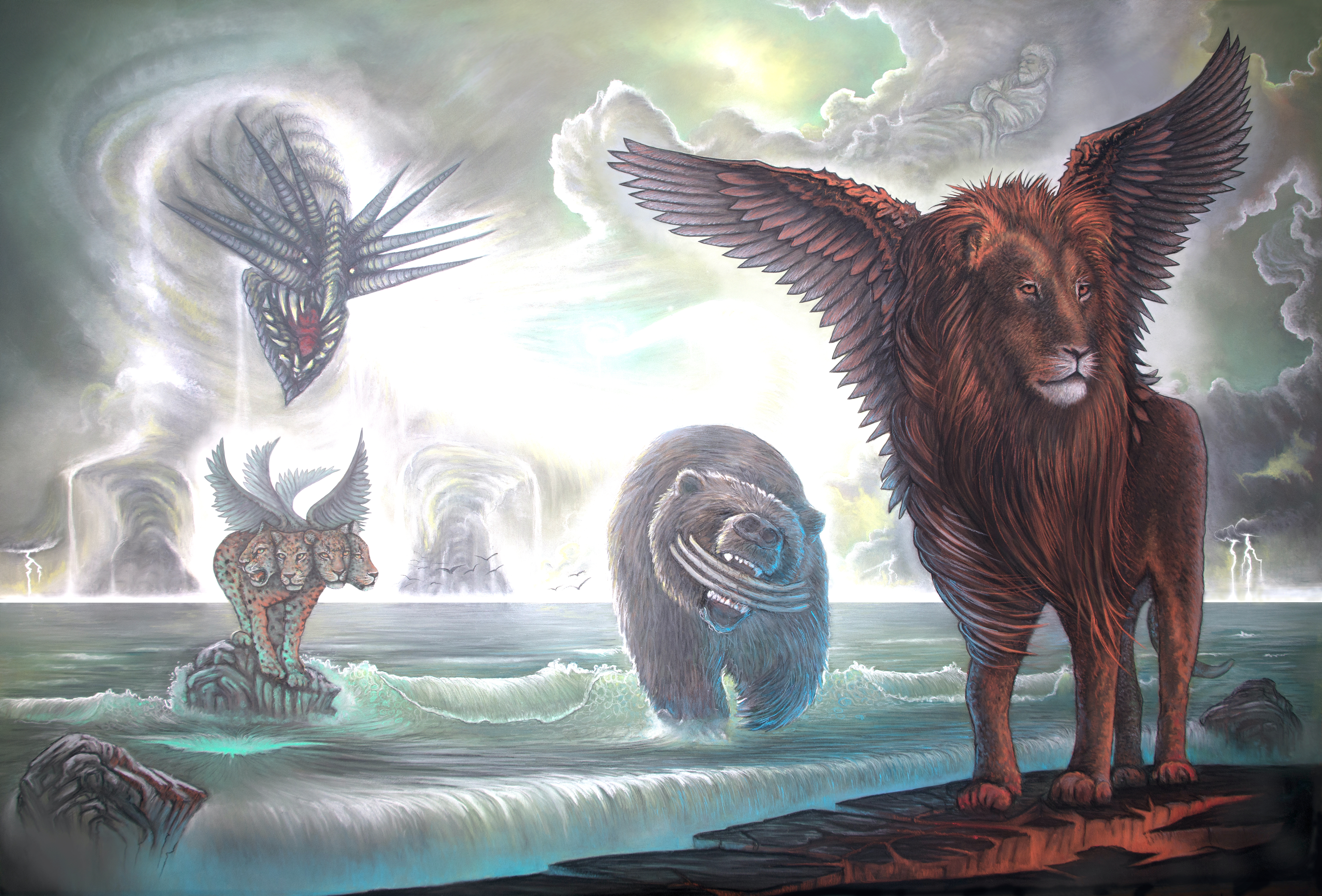3.7 - Daniel 7
(Work in progress.)

3.7.1 - Daniel 7:1 

Four Great Beasts from the Sea

1
3.7.2 - Daniel 7:2 

Commentary is not yet available on this verse.3.7.3 - Daniel 7:3 

Commentary is not yet available on this verse.3.7.4 - Daniel 7:4 

Commentary is not yet available on this verse.3.7.5 - Daniel 7:5 

Commentary is not yet available on this verse.3.7.6 - Daniel 7:6 

Commentary is not yet available on this verse.3.7.7 - Daniel 7:7 

Commentary is not yet available on this verse.3.7.8 - Daniel 7:8 

Commentary is not yet available on this verse.3.7.9 - Daniel 7:9 

Commentary is not yet available on this verse.3.7.10 - Daniel 7:10 

Commentary is not yet available on this verse.3.7.11 - Daniel 7:11 

Commentary is not yet available on this verse.3.7.12 - Daniel 7:12 

Commentary is not yet available on this verse.3.7.13 - Daniel 7:13 

Commentary is not yet available on this verse.3.7.14 - Daniel 7:14 

Commentary is not yet available on this verse.23.7.15 - Daniel 7:15 

Commentary is not yet available on this verse.3.7.16 - Daniel 7:16 

Commentary is not yet available on this verse.3.7.17 - Daniel 7:17 

Commentary is not yet available on this verse.3.7.18 - Daniel 7:18 

Commentary is not yet available on this verse.3.7.19 - Daniel 7:19 

Commentary is not yet available on this verse.3.7.20 - Daniel 7:20 

Commentary is not yet available on this verse.3.7.21 - Daniel 7:21 

Commentary is not yet available on this verse.3.7.22 - Daniel 7:22 

Commentary is not yet available on this verse.3.7.23 - Daniel 7:23 

Commentary is not yet available on this verse.3.7.24 - Daniel 7:24 

Commentary is not yet available on this verse.3.7.25 - Daniel 7:25 

Commentary is not yet available on this verse.3.7.26 - Daniel 7:26 

Commentary is not yet available on this verse.3.7.27 - Daniel 7:27 

Commentary is not yet available on this verse.3.7.28 - Daniel 7:28 

Commentary is not yet available on this verse.3.7.29 - Lessons from Chapter 7
Notes
1Daniel’s vision of four beasts coming up from the sea (Daniel 7:1-7‣). Copyright © 2018 by Kevin Kunz. Use of this license is subject to a Creative Commons Attribution-NoDerivatives 4.0 International (CC BY-ND 4.0) license.
2“One of the earliest christological scenarios was that which envisaged Jesus as the Son of Man coming on the clouds of heaven with his angels. It is still disputed whether Jesus used the expression Son of Man in the eschatological sense and if so whether he used it to refer to himself or to another figure.”—John J. Collins, “DANIEL, BOOK OF,” in David Noel Freedman, ed., The Anchor Bible Dictionary (New York, NY: Doubleday, c1992, 1996), 2:35.
Copyright © 2008-2025 by Tony Garland
(Content generated on Thu Sep 11 12:00:52 2025)
Contact
























































